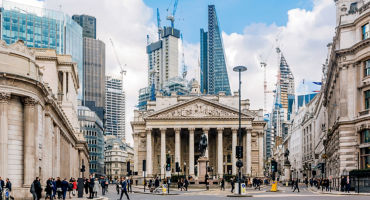Why a slow creep in unemployment may mean a more dovish Fed
As for the unemployment rate, my sense is that it could rise more substantially than the Fed thinks, albeit at a slower pace than in prior cycles. Typically, when growth slows, there is a sharp, quick rise in the unemployment rate. During the current cycle, however, this metric has been increasing much more slowly. I believe there are two reasons for this gradual ascent. First, recessions are usually caused by financial crises (as in 2008) or the lagged impact of high interest rates (as in 2001). Today, a financial crisis is less likely because of high capital requirements for banks, and an interest-rate-induced recession is improbable since the US economy is far more services oriented than manufacturing oriented, compared to the 2001 recession. Manufacturing is highly interest-rate sensitive, while services are not.
In addition, pent-up demand for services after COVID kept unemployment low and labor participation high. This is because, in aggregate, the service sector is less productive and efficient than the manufacturing sector. Consider the difference in productivity between a restaurant or retail store and a factory. When restaurants and stores experience rising demand, they hire additional staff to serve more customers. When a factory experiences higher demand, it can retool, run longer hours, and expend excess capacity, often without hiring more staff.
When government spending surged after COVID, the large US service sector had no choice but to hire workers to keep up with demand. As a result, the unemployment rate quickly normalized and remained under 4% from December 2021 until May 2024. Now that consumers have largely worked through their pandemic-induced excess savings, they are starting to pull back, which means the reverse may well happen. Companies in the services sector, seeing lower demand, have reduced hiring and may eventually lay off less productive workers. For this reason, I think the unemployment rate could rise well above the Fed’s projection of 4.4% by the end of 2025 and usher in an environment marked by a persistently dovish Fed.
One other point: While rate markets have largely priced in the Fed’s ability to cut aggressively, currency markets have not. The US dollar remains stubbornly strong despite the recent and expected near-term cuts. Given that the market anticipates policy rates to converge across the developed world within two years, it is strange for the dollar to be as strong as it is currently.














